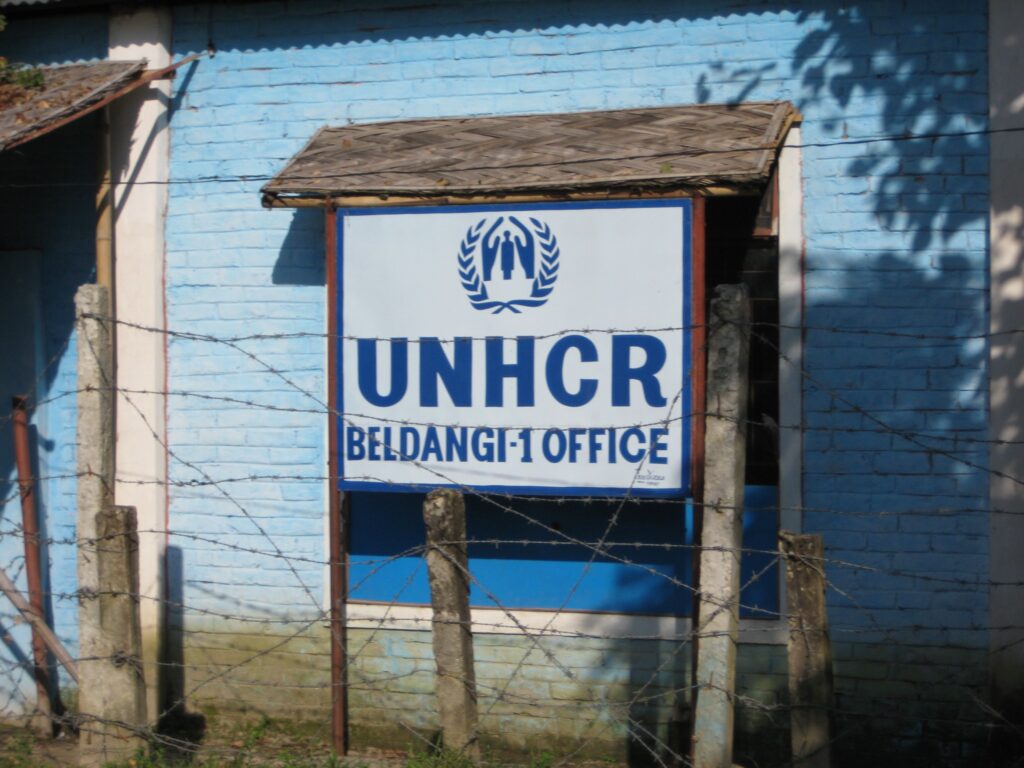
Bhutan, a small nation tucked away in the Himalayan region of South Asia is famous for its young-Monarch and its use of Gross National Happiness to measure prosperity. The entire world looks at Bhutan as a peaceful and prosperous nation with picturesque landscapes. However, a dark part of Bhutan’s history is often side-lined from discussions in the mainstream international sphere.
Over recent years, there has been a great amount of debate surrounding the migrant and refugee issue and a lot of attention has been directed towards the Mediterranean region. However, little to no discussion or attention has been given to the Lhotshampa refugees who were forcefully evicted from Southern Bhutan during the 1990s. Bhutan, often known as the last Shangri-la has generated one of the highest numbers of refugees in Asia.
Who are the Lhotshampa?
The Lhotshampa people are an ethnic minority in Bhutan who are of Nepalese descent and have lived in Bhutan since the 1600s. Most of the people migrated to Bhutan as commissioned traders and craftsmen to help in infrastructure projects like building Stupa’s and roadways such as the Thimpu-Phuntsholing highway. The population of these minorities flourished as they settled in Southern areas of Bhutan, and they were given the name Lhotshampa; meaning the people of the South. The migration to Bhutan continued largely unregulated with no government supervision and the minorities’ population grew over the years with most given Bhutanese citizenship.
Historical Context of the Ethnic Tension
The growing number of ethnic minorities was viewed as a threat to the Bhutanese cultural and national identity and differentiation between the population began to take shape with the introduction of series of discriminatory practices aimed at excluding minorities. Since the 1980s the government of Bhutan comprising primarily Ngalong; descendants of Tibetan Buddhists who make up the majority population of the country, introduced a series of discriminatory measures politically and culturally excluding the minorities.
With the introduction of the Citizenship Act of 1977 and 1985 the requirements for obtaining citizenship were tightened. The Acts established a cut-off year, 1958, as proof of being Bhutanese citizens. The year 1958 was stated as the cut-off date as most of the Bhutanese people were provided identification cards. Residents unable to supply this proof were categorised as illegal immigrants and were evicted from their properties and detained. Following these acts, a census was carried out in Southern Bhutan in 1988 with the aim of classifying the residents between nationals and non-nationals. This was an exercise deliberately aimed at othering the Lhotshampa minorities. Furthermore, Bhutanese in the northern region were provided citizenship on the basis of their race whilst the residents of the Southern borderland were required to produce identity documents in order to prove themselves as true-Bhutanese.
The process of systematic discrimination grew as people deemed ‘illegal’ were forced to sign voluntary migration and leaving certificates and were evicted from their land with little or no compensation while people who protested these laws were imprisoned, tortured and harassed. Through the ‘One Nation, One People’ Policy, the government imposed cultural and linguistic restrictions including removal of minority languages from the curriculum to imposing a strict dress-code policy. National integration policies based on northern Bhutanese traditions and cultures were mandated by the monarch, with the intention of erases ethnic minority cultures. The cultural code imposed a dress regulations called “Driglam Namzha” which are based on northern Bhutanese garments and identity markers. Furthermore, the royal decree also included a halt to the use of Nepali; the language used by the minorities as a classroom language and replaced it with Dzongkha.
Discriminatory practices like these introduced by the government fuelled ethnic tensions and created a large outflow of refugees as many fled the country seeking refuge in Nepal. The number of registered refugees in Nepal reached an excess of 100,000.
Plight of the Refugees
The Lhotshampa minorities who fled the country to seek refuge in Nepal have been denied re-entry into Bhutan on the grounds that they are illegal migrants. The refugees were settled into different camps in the South Eastern region of Nepal. As of 2007, there were over 108,00 refugees were living in seven camps in Nepal.
The aim to repatriate the people and provide them the right to return to Bhutan has been stalled as the government of Bhutan refuses to recognise the minorities as legal Bhutanese citizens. The lack of urgency and attention paid to the refugees has led to the prolonged plight of a people who have been consigned to live in camps for over 25 years. Though many refugees have been resettled abroad under United States and other neutral country schemes, many refugees continue to fight for their right to return. With two functional camps still in Nepal, the refugees still have hopes that they can one day return to a place they call their homeland. There are still over 18,000 refugees in the remaining camps in Nepal, most who live with the hopes of returning to their homeland.
The governments of Nepal and Bhutan, as active members of the South Asian Association for Regional Cooperation, must urgently engage in dialogue to find a solution to the problem. The diplomatic relations between the countries have remained bitter since the start of the crisis, despite multiple attempts to resolve the problem the two nations have been unable to reach a plausible solution. The bitter relationship between the two nations will hopefully improve when the crisis is mitigated with proper dialogue between the nations.
Prachi Aryal is an MA student in the Department of War Studies at King’s College London. Her research interest is inclined towards Gender, Human Rights, and Cross border conflicts in transitioning nations and how visuals from conflict zones play a role in communicating the realities of conflict to the broader world.
She completed her BA in Journalism from the University of Delhi, India.